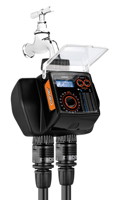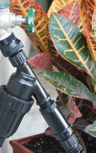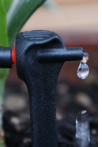Time to Tune Up Your Drip System
Spring is on its way, so it's time to get your drip irrigation system prepared for another bountiful growing season. Your system tune up shouldn't take very long, but the process is essential to ensure that everything operates correctly and that any maintenance or repairs can be completed before you actually need to start using your system. If you winterized correctly, your timer, fertigator, and head assembly (backflow preventer, filter, pressure regulator), should have been stored indoors at the end of the last growing system. Give them a quick look over and cleaning before installing. Here is a link to another helpful article for simple maintenance and repair tips: Drip Irrigation System Troubleshooting and Repair Guide.
 | Start by putting fresh batteries in your timer and cleaning your filter screen, then reassemble all your components in the correct order attached to your water supply (timer first, followed by backflow preventer, then filter, then pressure regulator, then tubing adapter). Next, flush out your mainline tubing by opening up the ends of your tubing runs and letting your water run out of the tubing for a few minutes. By giving the mainline tubing a good flush, you will avoid clogging your drippers with any debris that may have accumulated in your tubing over the winter. |
 | Once the system is flushed, re-attach the end caps and turn your water on again. Check for any leaks at the head assembly component connections. Re-tighten (making sure to only hand tighten) component connections and replace rubber washers as needed. You may hear hissing and notice drippers spitting and sputtering. Don't worry. It is just air in the system being expelled. Allow the water to run for 10 minutes, then keep it on as you walk the length of your system looking for drippers that may not be working properly. Replace or clean out (cleanable types only) any inoperative drippers. Also check your tubing for any leaks that may have been caused by cracks or rodents. Repair leaks by cutting out the damaged section and installing a coupler to reconnect the tubing sections |
 | Once your system passes your inspection, you are ready for another bountiful growing season. It is always a good idea to check your system several times throughout the season. Changes in temperatures can leave plants either too wet or too dry so it is a good idea to walk your system and check the health of your plants as the seasons change. Your plants will tell you if something is not in balance. Other things to look to for are punctures made from rodents chewing on the tubing, and drippers out of place caused by deer catching your tubing with their hooves. If you are in an area of hard water, drippers should be checked often to make sure that they have not clogged and stopped working. In these cases we highly recommend putting a minimum of two drippers per plant. Should one dripper stop working, the other will help keep your plant alive until you discover the clogged dripper. |